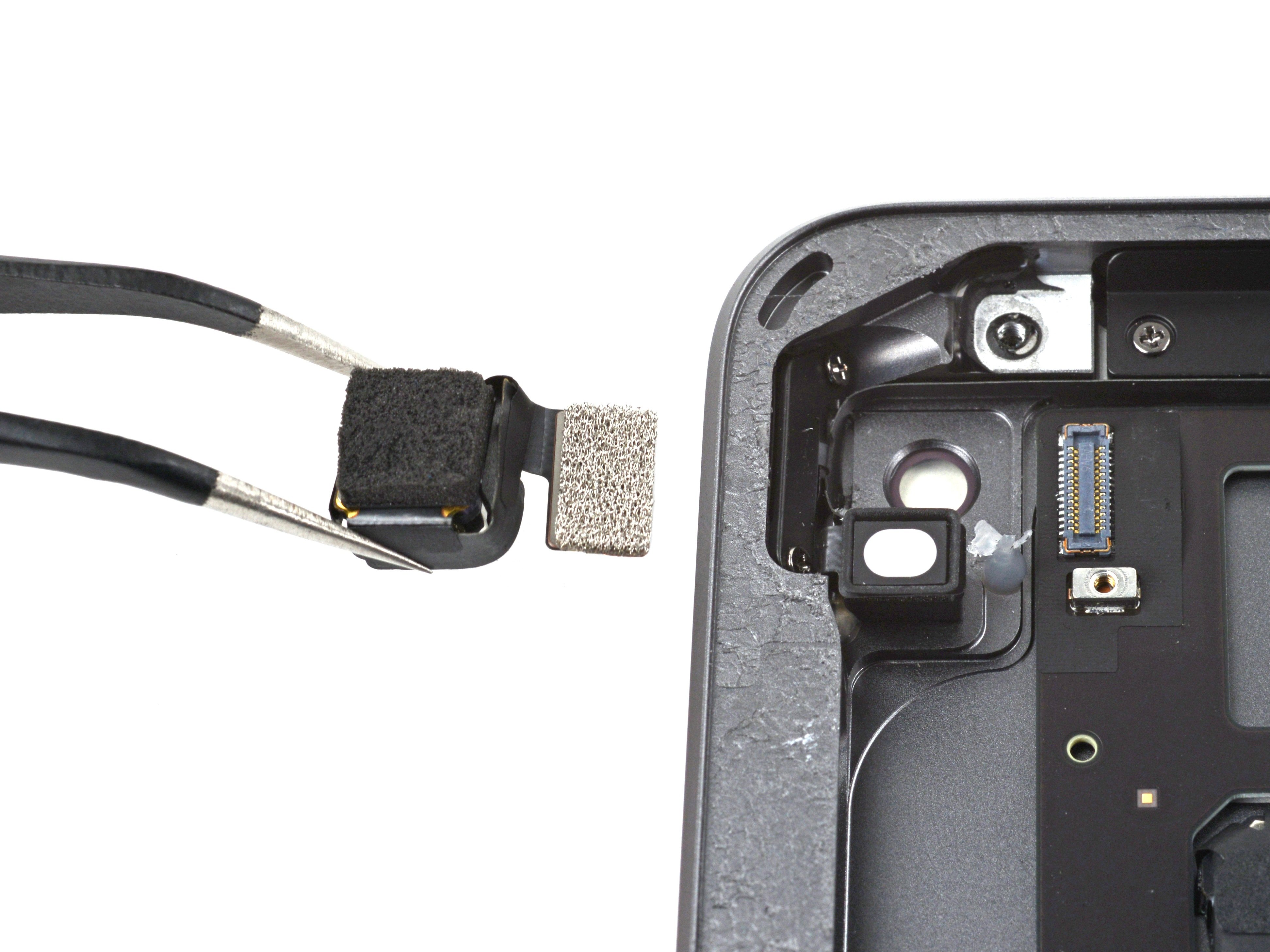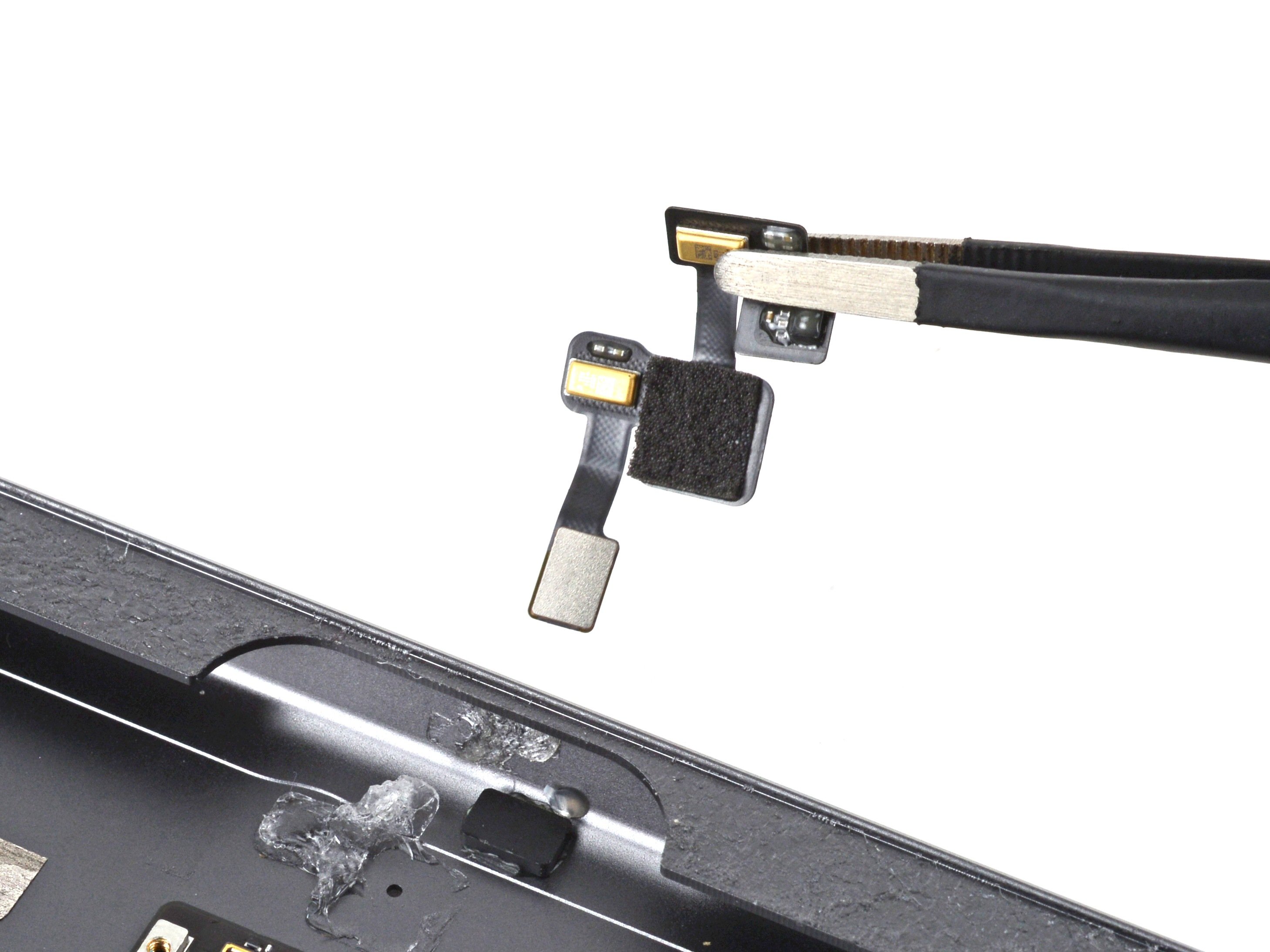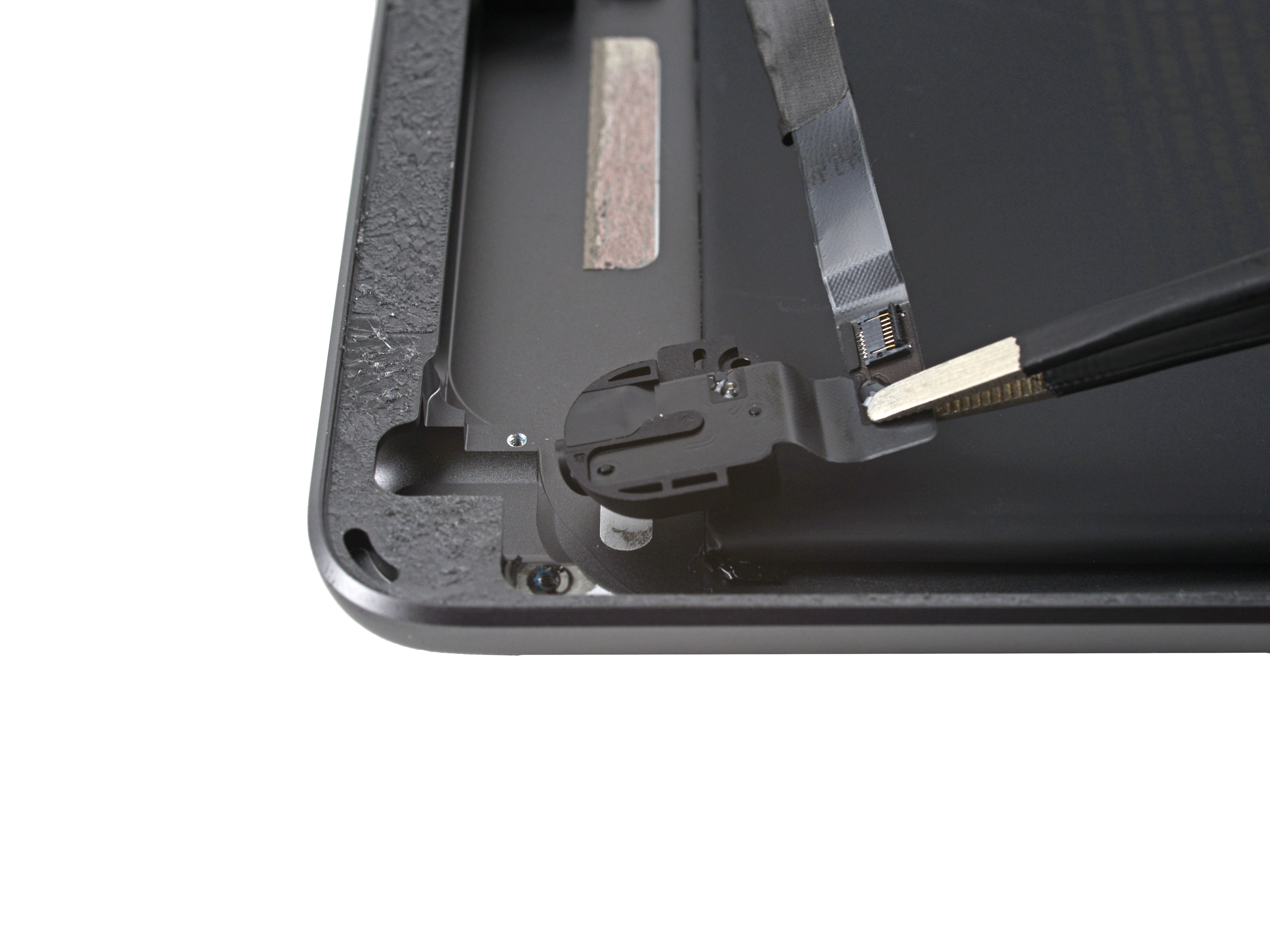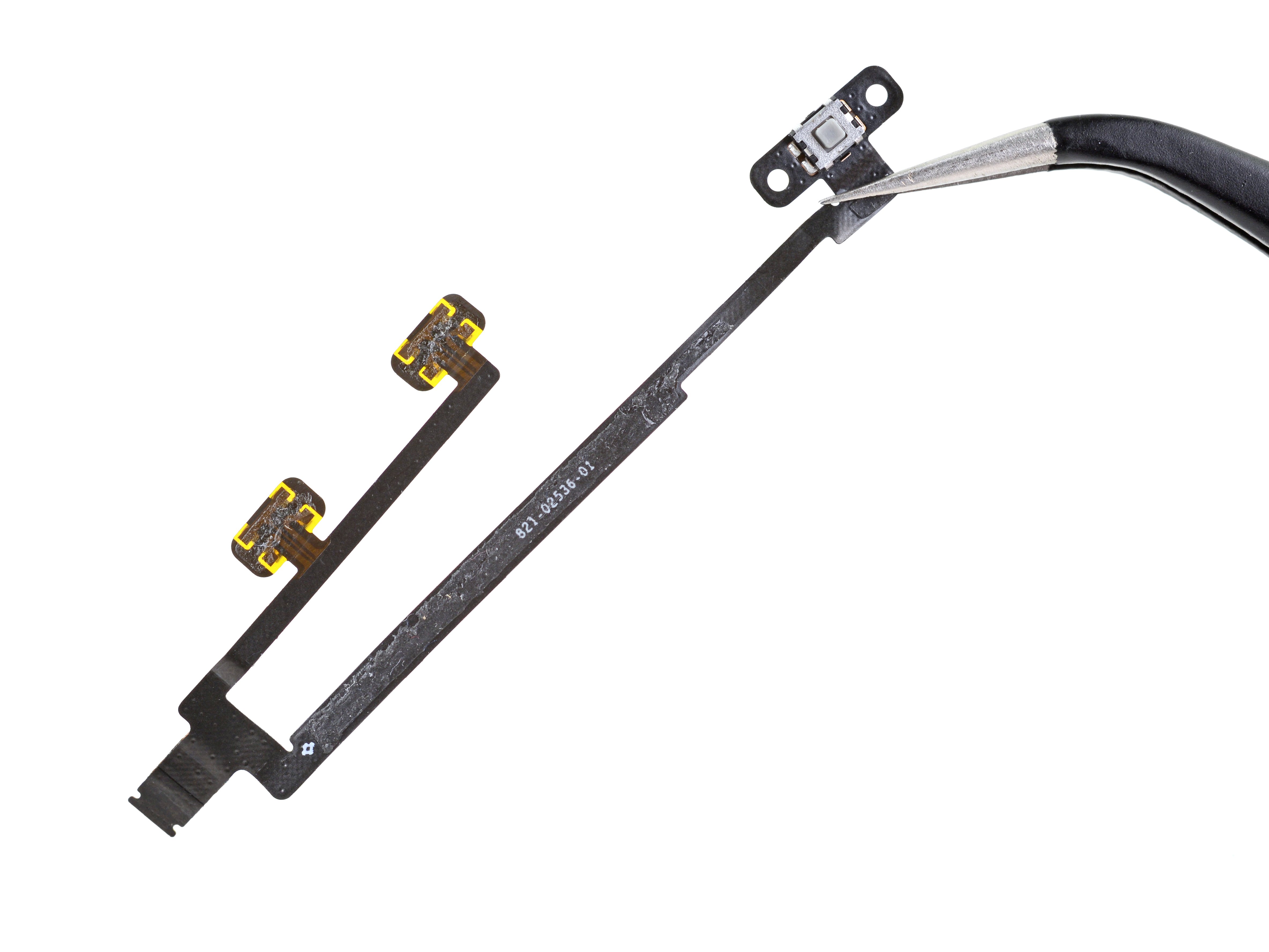DIY Guide to Replace iPad GSM Rear Facing Camera
Duration: 45 minutes
Steps: 59 Steps
Heads up! When tackling this repair, keep your tools handy and stay focused. If you hit a snag, don’t sweat it—just remember, you can always schedule a repair if you need a hand!
Get ready to bring your device back to life by swapping out that rear-facing camera! Follow this guide to make your repair journey smooth and enjoyable. If you need help, you can always schedule a repair.
Step 1
Before diving in, give your microwave a little TLC and wipe it down. Trust us, you don’t want any stubborn gunk from the bottom getting cozy with the iOpener.
– Pop that iOpener right in the middle of the microwave, and let it warm up.
Tools Used
Step 2
Hey there! Just a friendly reminder to keep an eye on the iOpener during your repair adventure. Overheating can lead to a bit of a dramatic situation, like an unexpected burst! So, let’s keep it under 100˚C (212˚F), alright?
If your iOpener looks like it’s been hitting the gym and is a bit swollen, give it some space. No touching!
If the center of the iOpener is still a bit too toasty for comfort, hang tight and keep using it while it cools down. A well-heated iOpener should stay cozy for about 10 minutes, so you’ve got time!
– Pop that iOpener in the microwave for thirty seconds and let the magic happen.
– As you work through the repair, keep an eye on the iOpener—when it starts to cool down, just give it another thirty seconds in the microwave to keep things toasty.
Tools Used
Step 3
The iOpener is going to be super toasty, so handle it with care! A trusty oven mitt can be your best buddy here.
– Carefully take the iOpener out of the microwave, holding it by one of the flat ends to steer clear of the warm center.
Tools Used
Step 4
No microwave? No problem! Just take a little detour and heat up your iOpener in some boiling water instead.
– Grab a pot or pan and fill it up with enough water to completely dunk your iOpener.
– Heat that water up until it’s boiling, then go ahead and turn off the heat.
– Gently place the iOpener into the hot water and let it hang out for 2-3 minutes, ensuring it’s fully submerged.
– Using tongs, carefully fish out the warm iOpener from the hot bath.
– Give the iOpener a good towel dry so it’s all set.
– And just like that, your iOpener is ready to rock! If you ever need to reheat it, just repeat the process: boil the water, turn off the heat, and let the iOpener soak for another 2-3 minutes.
Tools Used
Step 5
– Grab a SIM eject tool or a straightened paperclip and gently pop out that SIM tray like a pro!
Step 6
– Gently slide the SIM tray out of its cozy spot and set it aside for a moment. Time to give your iPad some breathing room!
– If you’re swapping out the SIM card, just pop it out of its tray and slide in the new one like a pro. You’ve got this!
Step 7
Rock those safety glasses to keep your peepers safe, and remember to handle that LCD screen with care – we want it looking pristine!
– If your display glass is cracked, let’s keep things safe and sound! Grab some tape and cover that glass to prevent any further shattering and avoid any pesky injuries while you work.
– Lay down some overlapping strips of clear packing tape over the iPad’s display until the whole front is nice and snug. It’s like giving your device a cozy blanket!
– Now, just follow the rest of the guide as best as you can. Keep in mind that once the glass starts to crack, it may want to keep going. You might find a metal prying tool handy to scoop out the pieces. No worries, you’ve got this!
Step 8
Hey there! Just a heads up: while you’re getting into this repair, you might encounter some sharp glass pieces. To keep your peepers safe from any flying bits, we highly recommend rocking a pair of safety glasses. Better safe than sorry, right?
– Place the iOpener flat against the right edge of your iPad, making sure it’s all smooth and snug for a solid connection with the iPad’s surface.
– Give it about 90 seconds to work its magic before you dive in and pop open that front panel!
Tools Used
Step 9
Getting the wedged tip of the opening tool between the glass and plastic might take a bit of muscle. Just take your time and keep it cool, gently wiggling the plastic tool back and forth as needed. You’ve got this!
– Hey there! Spot a tiny gap in the iPad’s adhesive ring in the upper right corner? That’s about 2.0 inches (~5 cm) from the top of your device. Let’s use that little opening to our advantage!
– Now, grab your tool and align it with the mute button. Gently slide the tip of a plastic opening tool into that gap between the front glass and the plastic bezel. Just insert the very tip—just enough to widen that crack a bit. You’re doing great!
Step 11
– With the plastic opening tool snugly lodged between the front glass and the plastic bezel, gently slide a plastic opening pick into the gap, right beside the trusty tool. Keep it steady and let’s keep going!
Step 12
– Take out the plastic opening tool from your iPad and gently slide the opening pick a little deeper under the front glass, about half an inch deep. You’re doing great!
Step 14
The adhesive is super strong, so be prepared to put in some elbow grease! Take your time and work with care.
If you can spot the tip of the opening pick peeking out from beneath the front glass, gently pull it out just a tad. No worries—using the pick this deep won’t cause any harm, but it might leave some adhesive residue on the LCD. Just a little reminder to keep things tidy!
– As you warm up the bottom edge with the iOpener, let’s get started on peeling off that adhesive from the right edge of your iPad.
– Gently slide the opening pick down the side of the iPad, releasing the adhesive as you glide along. You’ve got this!
Tools Used
Step 15
As you peel away the adhesive, you might want to slide that warm iOpener back onto the right edge of the iPad. Just keep in mind, this little move depends on how long the iPad has been chilling while you were busy working on it.
– If your opening pick seems to be stuck in the adhesive, just give it a little roll along the side of the iPad to keep loosening that sticky stuff. You’ve got this!
Tools Used
Step 16
– Before you pop out that first opening pick from the bottom corner of your iPad, slide a second pick under the right edge of the front glass. This will help keep the adhesive from getting clingy again!
– Give your iOpener a little reheat love, then place it at the top edge of your iPad.
Tools Used
Step 17
Hey there! Just a heads-up: the Wi-Fi antenna is snugly fastened to the bottom right edge of your iPad’s rear case with screws and a cable. Given how it’s positioned, it’s super important to handle this part with care—otherwise, you might accidentally harm the antenna. Let’s keep things running smoothly!
– Alright, folks, it’s time to tread carefully for the next few steps.
– You’ll need to gently detach the adhesive that’s holding the antenna to the front panel. Just be sure not to harm the fragile components connecting the antenna to the iPad’s bottom. So, let’s take it step by step and keep things smooth!
Step 18
Hey there! Just a friendly reminder not to slide that pick past the bottom right corner. Doing so might put a hurt on the Wi-Fi antenna, and we definitely don’t want that!
– Gently glide the opening pick around the bottom right corner of the iPad, freeing up that pesky adhesive. You’ve got this!
Step 19
Take your time as you glide the opening pick along the bottom right edge of the front panel. The Wi-Fi antenna is just a hop, skip, and a jump away from the corner, and it’s super easy to accidentally snip it if the adhesive doesn’t cooperate. Stay sharp and good luck!
Keep that pick snug under the front glass—just a smidge! Pull it out a tad, leaving about 1/8″ (3 mm) still tucked away. You’ve got this!
– Gently glide the edge of your trusty opening pick along the bottom edge of the iPad to free up the adhesive holding down the Wi-Fi antenna. Easy peasy!
Step 20
– Once you’ve gracefully glided past the Wi-Fi antenna (about 3″ or 75 mm from the right edge, right by the home button), it’s time to slide that opening pick back in all the way.
– Now, give that pick a little nudge to the right to break free the adhesive holding the Wi-Fi antenna snug against the front glass.
Step 21
Keep your iOpener cozy! Heat it for no more than a minute at a time, and let it chill for at least two minutes before giving it another warm-up.
– Keep gently peeling back the adhesive at the bottom of the iPad, making sure to pull the opening pick out far enough to navigate around the home button. Once you’ve successfully passed the home button, slide the pick back in to a depth of about 1/2 inch (10 mm).
Tools Used
Step 22
– Keep peeling away that adhesive all along the bottom edge of the iPad like a pro!
– Nestle the opening pick snugly under the front glass close to the home button for a secure hold.
Step 24
If the adhesive has gotten a bit too cool for comfort, just pop the iOpener back along the top edge and keep going. And if the iOpener itself has chilled out too much, give it a quick reheat and you’re good to go!
– Gently glide that opening pick along the top edge of your iPad, giving it a little tug to navigate around the front-facing camera bracket.
– The adhesive here is quite the tough cookie, so you might need to apply some elbow grease. Take your time and be cautious—nobody wants to slip and hurt themselves or their iPad.
– If your opening pick is feeling a bit sticky in the adhesive, just give it a little ‘roll’ as demonstrated in step 9.
Tools Used
Step 25
If the adhesive is feeling cozy and warm, go ahead and take the iOpener off the iPad for some smooth sailing. But if it’s still clingy, no worries! Just reheat that iOpener and set it on the left edge while you work your magic.
– Keep peeling away the sticky stuff along the top edge of your iPad, and gently work that opening pick around the top left corner.
Tools Used
Step 26
The digitizer cable is hiding about 2″ (50 mm) up from the bottom of your iPad. Just a friendly heads-up: stop sliding that pick when you hit around 2.25″ (60 mm) from the bottom. You’ve got this!
– Gently glide the opening pick along the left edge of your iPad, freeing the adhesive as you go. The adhesive here is pretty thin thanks to the digitizer running along the entire left side. Just be careful not to go too deep (keep it to a max of 1/2 inch or 10 mm) to avoid any mishaps with the digitizer.
Step 27
Be super careful! The bottom of the digitizer cable is just about 1 inch (25 mm) away from the bottom of the iPad. Take your time and be gentle to avoid cutting this cable.
– With the trusty opening pick still nestled under the bottom edge of your iPad, gently work it to loosen the adhesive in the bottom left corner. Let’s get that corner ready for action!
Step 28
Sometimes, the adhesive around the iPad’s edge may decide to stick around a little longer than you’d like. If you find yourself in this sticky situation, gently slide a pick under the edge of the iPad where the front glass is still holding on tight and give that adhesive a little ‘snip’ to set it free.
– Take one of those nifty opening picks and gently pry up the bottom right corner of the iPad. Once it’s popped up, use your fingers to grab it and give yourself a little high five for being awesome!
Step 29
Watch out for any leftover sticky stuff that might still be clinging on, and grab an opening pick to slice through any adhesive that’s keeping the front panel snug. Stay safe and take your time!
– Grab your iPad by the top and bottom right corners and gently twist the front glass away from the device. You’ve got this!
– When it’s time to put things back together, don’t forget to give that LCD a little TLC! Use a microfiber cloth and some compressed air to banish any dust bunnies or fingerprints before sealing it up with the glass again.
Step 30
The bottom left screw is hidden behind the home button ribbon cable connector. Gently push the home button ribbon cable to the side so you can easily access and remove that pesky bottom left screw.
– Unscrew the four 2 mm Phillips #00 screws that are holding the LCD snugly to the aluminum frame. You’ve got this!
Step 31
Handle the LCD with care! That ribbon cable is a bit of a delicate flower and could snap if it gets too much flexing. Be gentle, and if you need help, you can always schedule a repair.
– Grab your trusty plastic opening tool or spudger and gently pry up the right edge of the LCD from the iPad. It’s like giving it a little nudge to say, ‘Hey, time to come out!’
– Once you’ve got it lifted, swing the LCD over to its left edge and let it rest comfortably on top of the front glass panel. It’s all about that easy transition!
Tools Used
Step 32
– With the spudger in hand, gently lift the piece of tape that’s keeping the LCD ribbon cable connector snug and secure.
Tools Used
Step 33
– Gently lift the retaining flap on the LCD ribbon cable ZIF connector. You’ve got this!
– With a little finesse, use your fingers or some tweezers to pull the LCD ribbon cable out of its cozy spot on the logic board.
– If the LCD screen decides to play hard to get and doesn’t light up after you’ve connected the ZIF connector, just give your iPad a little nudge. Hold down the power button and the home button for about ten seconds until you see that lovely Apple logo pop up. You’re almost there!
Tools Used
Step 34
– Gently lift the LCD away from the front panel without getting your fingers on the screen. You’ve got this!
Step 35
If it’s there, gently peel off that piece of electrical tape that’s cozying up to the Wi-Fi antenna, speaker cable, and home button ribbon cable. You’re doing great!
Step 37
– Grab a trusty pair of tweezers and gently pull the home button ribbon cable straight out of its cozy spot on the logic board. You’ve got this!
Tools Used
Step 39
– Grab your trusty spudger and gently lift that piece of tape holding down the digitizer ribbon cable to the logic board. You’re doing great!
Tools Used
Step 41
– Grab that trusty spudger and use its flat end to gently pry up the adhesive that’s holding down the digitizer ribbon cable. You’ve got this!
– Once you’ve loosened it up, simply pull the digitizer ribbon cable straight out from its cozy home on the logic board. Easy peasy!
Tools Used
Step 42
– Gently lift the digitizer ribbon cable and grab your trusty spudger to carefully pry away the adhesive that’s holding the cable to the rear aluminum case. You’ve got this!
Tools Used
Step 43
– With a gentle tug from your fingers, carefully pull the digitizer ribbon cable out of its cozy little spot in the aluminum frame.
– Next up, let’s liberate the front panel from the iPad. It’s time for it to shine!
Step 44
– Gently peel away that sneaky piece of electrical tape hiding the headphone jack assembly cable connector. It’s time to set it free!
– With your trusty spudger in hand, flip up the retaining flaps on both ZIF connectors that are holding the headphone jack cable snugly to the logic board. You’re doing great!
Tools Used
Step 45
– Gently slide the flat end of a spudger under the headphone jack assembly cable to free it from the adhesive hugging the rear aluminum frame.
– Carefully pull the headphone jack assembly cable straight out from its cozy spot on the logic board.
Tools Used
Step 46
– Gently peel away the tape that’s keeping the SIM board cable ZIF connector snug and secure.
– Carefully lift the retaining flap on the SIM board cable ZIF connector.
– With the pointy end of a spudger, smoothly pull the SIM board cable straight out from its cozy spot on the logic board.
Tools Used
Step 47
– Get ready to tackle this step! Unscrew the three 1.75 mm Phillips #00 screws that are keeping the SIM board snug in the aluminum frame. You’ve got this!
Step 48
As you gently maneuver the headphone jack assembly cable out of the way, remember to take it easy on the headphone jack itself—yanking too hard might just send it packing!
– While keeping the headphone jack assembly cable neatly tucked away, gently take out the SIM board from the iPad.
Step 49
– Gently peel away the adhesive tape that’s holding down the headphone jack assembly. You’ve got this!
Step 50
– Unscrew the lone 2.6 mm Phillips #0 screw that’s keeping the camera cable snugly attached to the headphone jack assembly. You got this!
Step 51
– Grab your trusty spudger and gently wiggle the flat end to pop the front-facing camera out of its cozy spot on the headphone jack assembly.
– Keep that spudger in place and slide it over to the right. This will help free the adhesive that’s keeping the camera cable snug.
Tools Used
Step 52
– Grab that trusty spudger and gently lift the retaining flap on the microphone cable ZIF connector. You’re doing great!
– Next, slide the spudger’s tip underneath the microphone ribbon cable and carefully detach it from its ZIF connector. Almost there!
– Now, give the spudger a little slide to the left to break the adhesive that’s keeping the microphone ribbon cable stuck to the headphone jack assembly. You’re on a roll!
Tools Used
Step 53
– Gently use the flat end of the spudger to lift the antenna connector cable out of its cozy home on the headphone jack assembly board.
Tools Used
Step 54
– Gently lift the little flap that’s holding the volume/power button ribbon cable connector in place on the headphone jack assembly board. You’ve got this!
– Carefully disconnect the volume button ribbon cable from its ZIF connector. Easy peasy!
Step 55
– Unscrew the screws holding the headphone jack assembly in place, and let the adventure begin!
Step 56
– With a gentle grip on the ribbon cable of the headphone jack assembly, smoothly slide the assembly downwards, parallel to the iPad, towards the bottom. Remember, take your time and be patient—you’re doing great!
Step 57
– With both hands, grip the headphone jack assembly and gently tug it away from the iPad, being careful of any cables that might be in the way.
Step 58
– With the flat end of a spudger in hand, gently nudge the rear-facing camera out of its cozy spot on the underside of the headphone jack assembly board. You’ve got this!
Tools Used
Step 59
– The rear-facing camera is still in place.

































































































































